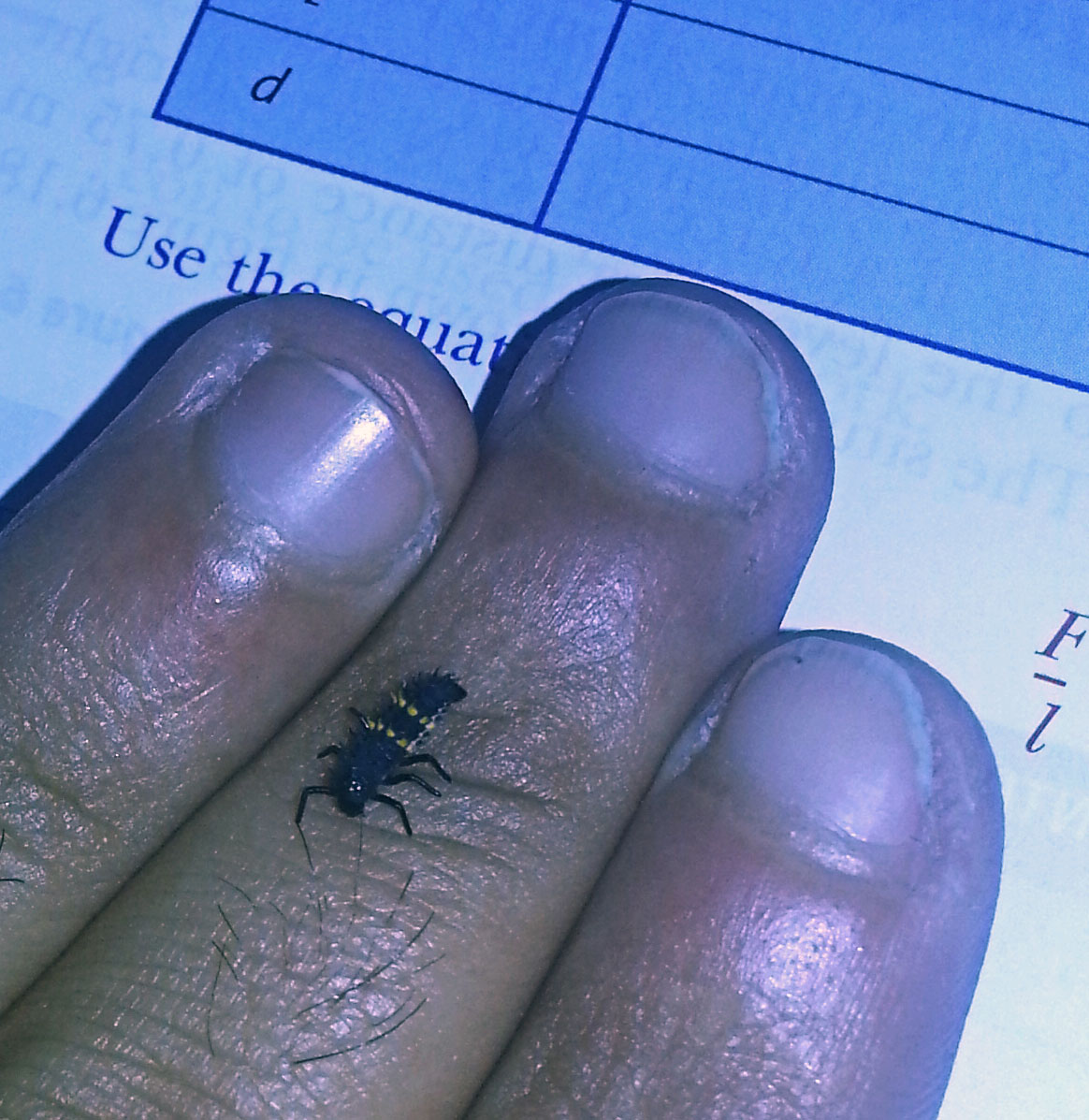I found this today in the library while studying. I am very curious to know whether this particular insect has a name that I can look up and find more information about:

Full length is almost one centimeter. It doesn't bite or anything. It has lots of small hairs in its back (similar to cockroaches and ants) and has a tail that a white sticky substance comes out from.
